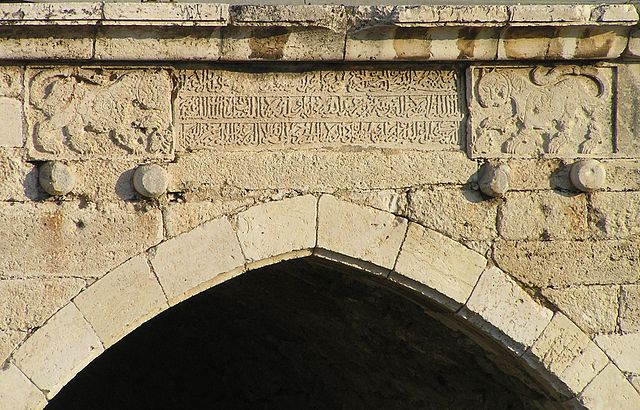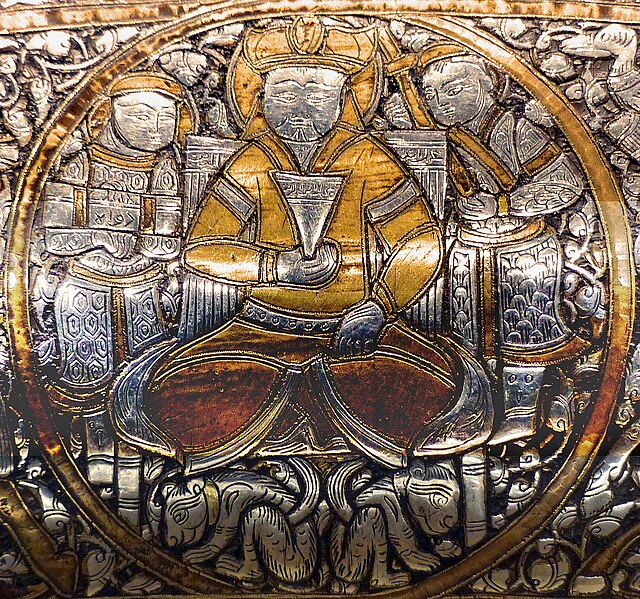Al-Malik al-Zahir Rukn al-Din Baybars al-Bunduqdari, commonly known as Baibars or Baybars and nicknamed Abu al-Futuh, was the fourth Mamluk sultan of Egypt and Syria, of Turkic Kipchak origin, in the Bahri dynasty, succeeding Qutuz. He was one of the commanders of the Egyptian forces that inflicted a defeat on the Seventh Crusade of King Louis IX of France. He also led the vanguard of the Egyptian army at the Battle of Ain Jalut in 1260, which marked the first substantial defeat of the Mongol army and is considered a turning point in history.
A probable near-contemporary depiction of Sultan Baybars: enthroned ruler and attendants in the Baptistère de Saint Louis (1320–1340).
Bridge built by Baybars near modern Lod, with an inscription from 1273 glorifying the sultan and depicting his emblem, the lion/panther
Gold coin minted under Baybars, with an Arabic inscription and an image of a panther or lion below it
Possible depiction of king David of Makuria on a wallpainting from Old Dongola
The Mamluk Sultanate, also known as Mamluk Egypt or the Mamluk Empire, was a state that ruled Egypt, the Levant and the Hejaz from the mid-13th to early 16th centuries. It was ruled by a military caste of mamluks headed by a sultan. The sultanate was established with the overthrow of the Ayyubid dynasty in Egypt in 1250 and was conquered by the Ottoman Empire in 1517. Mamluk history is generally divided into the Turkic or Bahri period (1250–1382) and the Circassian or Burji period (1382–1517), called after the predominant ethnicity or corps of the ruling Mamluks during these respective eras.
Extent of the Mamluk Sultanate under Sultan Al-Nasir Muhammad
Frontispiece of Sulwan al-Muta’ fi ‘Udwan al-Atba’ by Ibn Zafar al-Siqilli, Mamluk Egypt or Syria, circa 1330.
Horsemen with lances. Nihāyat al-su’l (horsemanship manual) by Aḥmad al-Miṣrī ("the Egyptian"), dated 1371, Mamluk Egypt or Syria.
Enthroned ruler and attendants in the Baptistère de Saint Louis (1320–1340). This is a probable depiction of Sultan Baybars.








